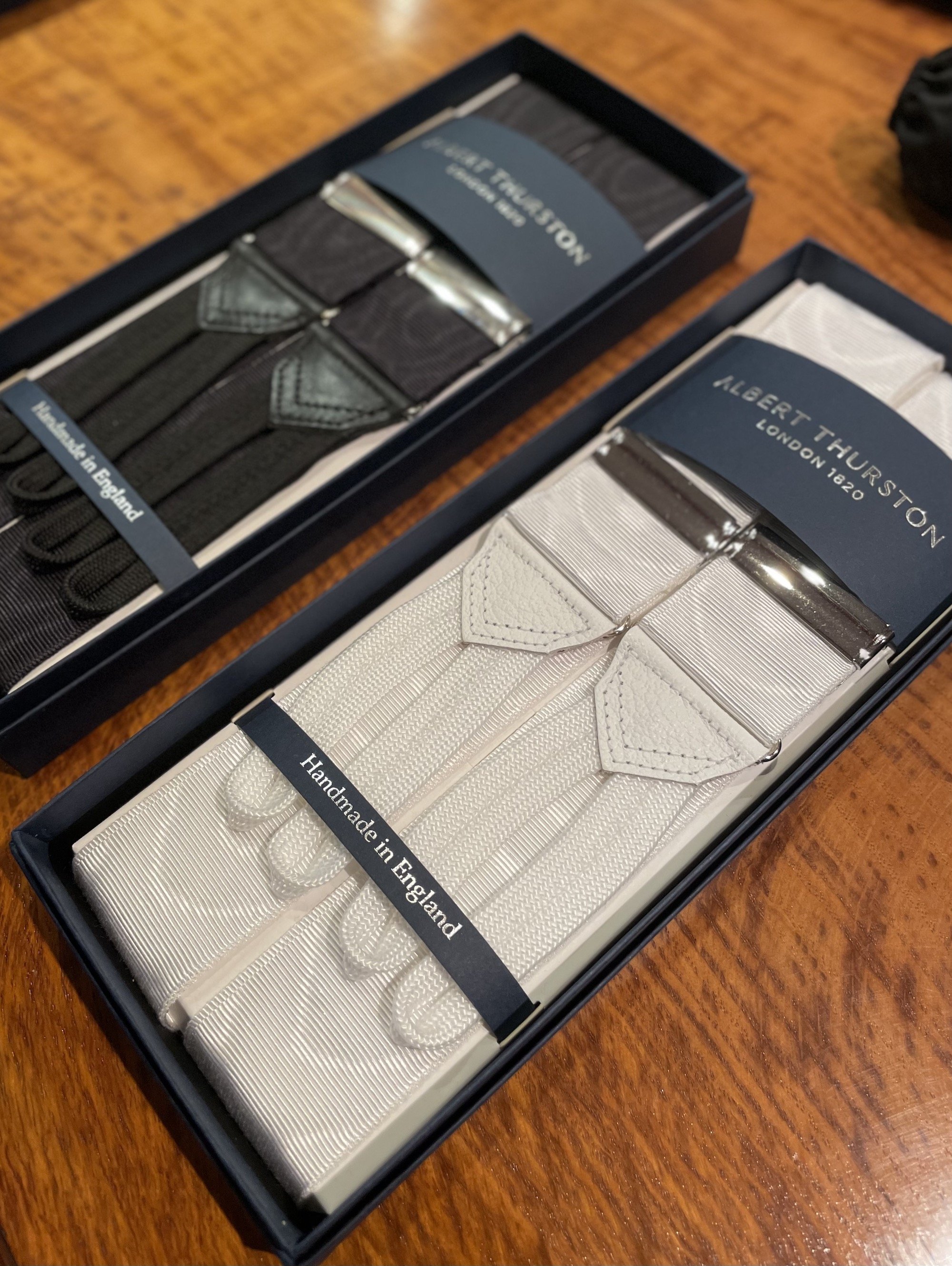How to style your tuxedo
Now that you have the perfect tuxedo sorted out, elevate it with the perfect accessories. Your choice of shirt and shoes are key, but accessories, like bow ties, cuffs or braces can really speak to your personal style. We’re going to help you make sense of it, so you can choose what works for you.
The tuxedo shirt
The tuxedo shirt is really the unsung hero of any formal look. It can make or break the whole ensemble, which is why you really shouldn’t leave it to chance.
Let’s take a closer look at the placket, collar and cuffs choices you can make.
Shirt plackets
The style of a tuxedo shirt is very much about the plaque, aka the narrow strip of fabric where the buttons and buttonholes are.
Front placket is the most common type of placket style, where the fabric is folded over and sewn with a fused interlining. You can’t go wrong with this classic look.
With the covered placket (fly front), an extra piece of fabric covers up the buttons on your shirt.
The tuxedo front (plain front) looks similar to the French front, except the top four buttons are removable for tuxedo studs.
The shirt collar
Wing tip collar, the most formal collar option, gets its name from the fold-out collar points that look like wings, and goes perfectly with a bow tie.
The spread collar, wider than a point collar, will work just as well with a bowtie or a necktie. The spread refers to the distance between the two collar points.
Or you could go for the sophisticated shirt bib, which has a rectangular panel at the front of the shirt. You have a choice of pleated bib, or a pique bib, the more formal option, made from stiff fabric in a slightly dimpled wove.
When it comes to cuffs for your shirt, French cuffs, which are held by cufflinks, are the obvious choice when wearing a tuxedo.
Cummerbund or waistcoat?
Zink & Sons tuxedo waistcoat
The cummerbund was invented to cover the waistline and any accidental shirt bunching. You’d only ever wear a cummberbund with tuxedo, and it’s considered the more traditional choice to complement your tuxedo. If you do go for one, try to match the fabric to the lapels for some inspired coordination.
Another option is the low-cut waistcoat, which will emphasise your shirt and your choice of neckwear, and lend you an elaborate, considered look.
One of the traditional guiding principles of a formal dress code is that all the working parts of your ensemble must be covered or dressed. While the rule has become more of a guideline, we still find the rule’s offspring in formalwear: vests and cummerbunds.
For a more modern look, you could do away with both of them, yet still enjoy the elegance of a tuxedo.
Bowtie or necktie?
For the really formal events, like weddings and balls, this is obvious. It has to be a bowtie. But if you’re not getting married and you’re more on the experimental side of bespoke wear, then feel free to go for a tie that enhances your personal expression.
The go-to fabric for the bowtie is silk – whether it’s silk satin, knit silk or silk twill. If you’re lapels are satin, then matching the bowtie to them makes style sense. Or you could go for a velvet or wool bowtie for a seasonal shift.
Cufflinks and studs
Elegant studs available for purchase at Zink & Sons
Cufflinks give you the chance to have some fun with your outfit, through this minute detail that may not be immediately obvious to many. Go with what speaks to your personality, whether classic, playful or slightly on the extravagant side.
Button studs are designed to fit into the buttonhole of your placket. You’ll need to match these with your cufflinks, or else you'll be committing tuxedo sacrilege.
Pocket squares
Pockets squares can say a lot about where you are on the sophisticated scale. When it comes to tuxedos though, less can be more, and a white or a black square are enough, perhaps a simple pattern at the most. You don’t want to detract from the balance of your ensemble. When it comes to cloth, stick to silk.
Belt or braces
Tuxedo pants don’t have loops, so there’s no place for a belt. If you feel like you need some suspension (though, if we made them for you, your trousers should fit to perfection), or if you simply like the look of braces, go for a traditional button style pair. We stock Albert Thurston braces — they’ve been around since the 1820s, so you can’t go wrong with them.
Shoes
When it comes to wearing a tux, patent leather is the most obvious, elegant choice. an easy, go-to choice. The shine of the patents works with the satin in your labels and pant strips to create a perfect match.
Another option is a sleek cap toe shoe, which combines matte and patent leather, is another option that meets the elegance criteria, without adding too much distracting detail to the outfit.
And, of course, if dancing is your focus for the evening, then you might like to opt for maximum chic comfort with a pair of loafers.
There’s more than one way to add texture to a tux, but none of them have been proven to improve your dance moves like a loafer. Make them velvet or grosgrain and you won’t miss a style beat.
Wearing a tuxedo can and should be a fun, but everything feels better and can be even more fun if it feels like it’s in tune with your personality. So paying attention to the details that honour you is worth pit.
Are you ready to start planning your tuxedo?
Book a time to drop by the shop and we’ll get you on your way in no time.





